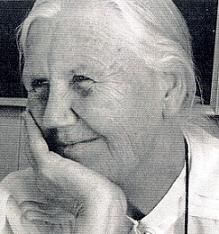A


- Diane Abbott, British former Labour Party and current Independent Member of Parliament (MP) and patron of anti-war group Stop the War Coalition
- Dekha Ibrahim Abdi (1964–2011) – Kenyan peace activist, government consultant
- David Adams (born 1939) – American author and peace activist, task force chair of the United Nations International Year for the Culture of Peace, coordinator of the Culture of Peace News Network [1]
- Jane Addams (1860–1935) – American, national chairman of Woman's Peace Party, co-founder and president of Women's International League for Peace and Freedom
- Ruth Adler (1944–1994) – feminist, and human rights campaigner in Scotland
- Eqbal Ahmad (1933/34–1999) – Pakistani political scientist, activist
- Martti Ahtisaari (1937–2023) – former president of Finland, active in conflict resolution
- Robert Baker Aitken (1917–2010) – Zen Buddhist Rōshi and anti-war activist, anti-nuclear testing activist, and proponent of deep ecology
- Tadatoshi Akiba (born 1942) – Japanese pacifist and nuclear disarmament advocate, former mayor of Hiroshima
- Widad Akrawi (born 1969) – Danish-Kurdish peace advocate, organizer
- Stew Albert (1939–2006) – American anti-Vietnam war activist, organizer
- Abdulkadir Yahya Ali (1957–2005) – Somali peace activist and founder of the Center for Research and Dialogue in Somalia
- B. R. Ambedkar (1891–1956) – Polymath, economist, jurist, social reformer, civil rights leader, political philosopher and revivalist of Buddhism in India
- Günther Anders (born Günther Siegmund Stern, 1902–1992) – German philosopher and a critic of nuclear weapons and nuclear deterrence
- Ghassan Andoni (born 1956) – Palestinian physicist, Christian, advocate of non-violent resistance
- Andrea Andreen (1888–1972) – Swedish physician, pacifist, and feminist
- Annot (1894–1981) – German artist, anti-war and anti-nuclear activist
- José Argüelles (1939–2011) – American New Age author and pacifist
- Émile Armand (1872–1963) – French anarchist and pacifist writer
- Émile Arnaud (1864–1921) – French peace campaigner, coined the word "pacifism"
- Klas Pontus Arnoldson (1844–1916) – Swedish pacifist, Nobel peace laureate, founder of the Swedish Peace and Arbitration Society
- Ya'akov Arnon (1913–1995) – Israeli economist, government official and pacifist
- Vittorio Arrigoni (1975–2011) – Italian reporter, anti-war activist
- Pat Arrowsmith (1930–2023) – British author and peace campaigner, co-founder of CND
- Arik Ascherman (born 1959) – Israeli-American rabbi and advocate for human rights in Israel and Palestine
- Muhammad Ashafa (born 1960) – Nigerian Imam and co-founder of the Interfaith Mediation Center of the Muslim-Christian Dialogue
- Steve Ashley (born 1946) — British singer-songwriter and peace campaigner
- Margaret Ashton (1856–1937) – British suffragist, local politician, pacifist
- Nafez Assaily (born 1956) – Palestinian sociologist and long-term advocate of nonviolence
- Julian Assange (born 1971) – founder of WikiLeaks, recipient of numerous prizes and awards, and one of only six people to be recognised with the Gold medal for Peace with Justice of the Sydney Peace Foundation
- Anita Augspurg (1857–1943) – German lawyer, writer, feminist, pacifist
- Uri Avnery (1923–2018) – Israeli writer and founder of Gush Shalom
- Mubarak Awad (born 1943) – Palestinian–American advocate of nonviolent resistance, founder of the Palestinian Centre for the Study of Nonviolence
- Ali Abu Awwad (born 1972) – Palestinian peace activist and proponent of nonviolence from Beit Ummar, founder of Taghyeer (Change) Movement
- Ayo Ayoola-Amale (born 1970) – Nigerian conflict resolution professional, ombudsman, peace builder and poet



















































